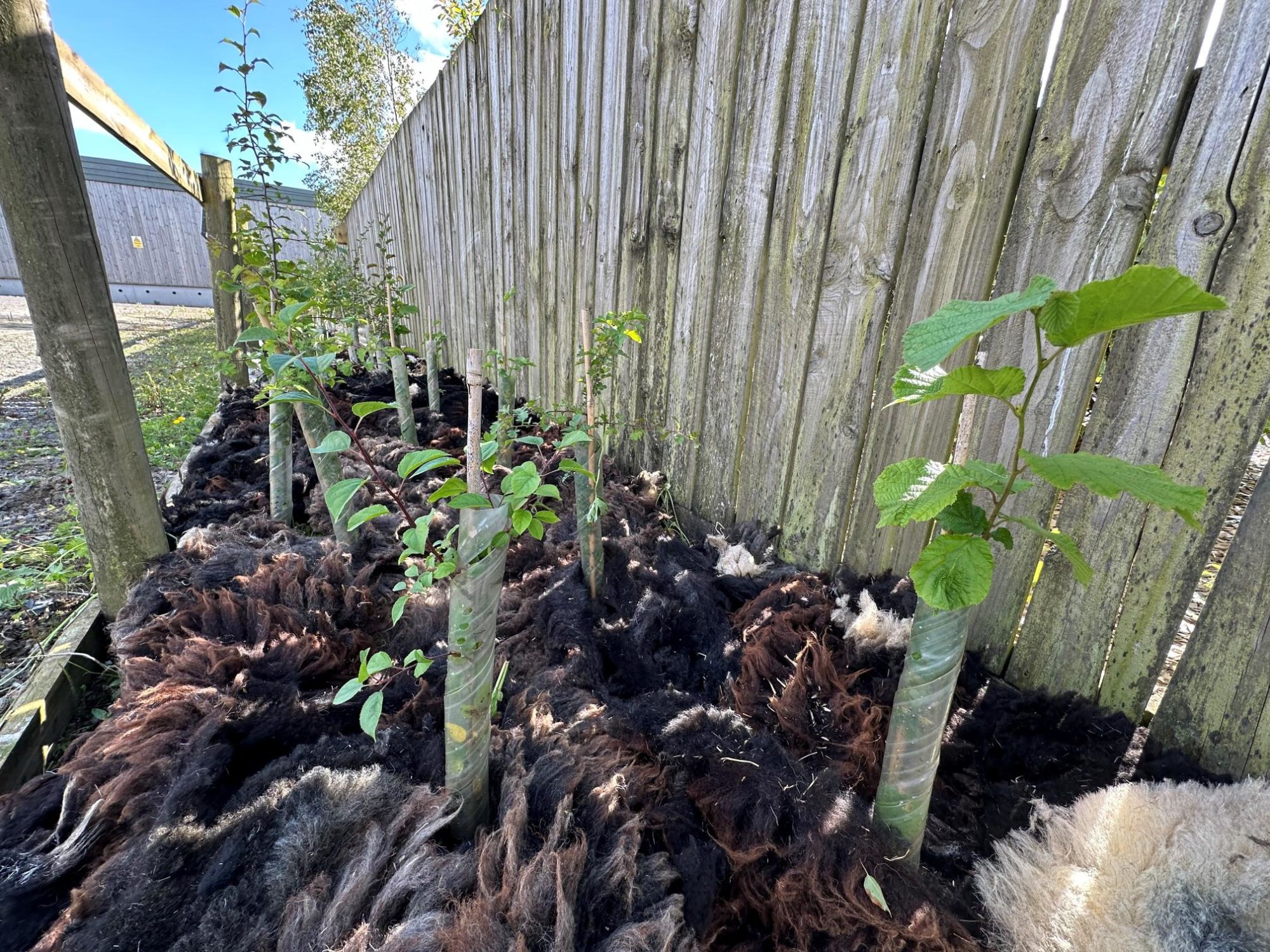Why is wool good for trees?
300 trees planted around Folly Farm with help from local students.
Last year the Pembrokeshire College animal care students helped us to plant around 300 trees around the site with the help of the Woodland Trust’s ‘Trees for Schools and Communities’ scheme. One stretch of hedgerow was planted next to the Pembrokeshire College classroom, which is located on-site, bordering our zoo. The hedgerow is a mixture of native trees and one year on they are really starting to establish.
This month we gave the hedge a helping hand by utilizing surplus sheep wool from our farm section. The sheep are sheered each year in preparation for the summer months producing a wonderful product with multiple uses. After a bit of weeding, we distributed the wool around the tree saplings, acting as a natural weed membrane which is more eco-friendly than plastic alternatives. The thick wool of our Grey-faced Dartmoor sheep is particularly good for this task and the colourful Jacobs sheep wool adds a wonderful pattern to the hedgerow.
Although the wool is a peculiar sight, it has multiple benefits for the new trees. It helps to reduce weeds, which compete for water and light. It helps to keep moisture in the soil, making the area more resilient to drought. When the wool eventually breaks down after 1-3 years it gives the soil extra nutrients.

